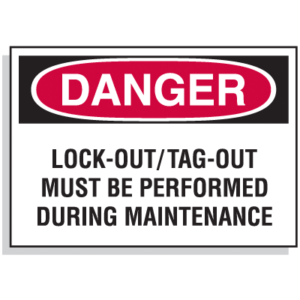Standardize An Effective Lockout/Tagout Program - Part 1

Understanding components of an effective lockout/tagout program
In order to protect employees from hazardous energy sources on machines and equipment during service and maintenance, OSHA has established lockout/tagout standards. Employers have the flexibility to develop an energy control program suited to the needs of their workplace.
Employees Need to Know
Lockout/tagout is simply completed by affixing appropriate devices to energy-isolating devices and de-energizing machines and equipment.
Employees must be trained to ensure they understand and follow the hazardous energy control procedures. This program should cover the aspects of the company's energy control program, each employee's role within the program and address OSHA's standards related to each specific issue.
Employer's Responsibilities
OSHA's standards establish requirements employers must follow when employees are exposed to hazardous energy while servicing and maintaining equipment and machinery. Some of the most critical requirements from these standards:
- Develop, implement, and enforce an energy control program.
- Use lockout devices for equipment that can be locked out. Tagout devices may be used in lieu of lockout devices only if the tagout program provides employee protection equivalent to that provided through a lockout program.
- Ensure that new or overhauled equipment is capable of being locked out.
- Develop, implement, and enforce an effective tagout program if machines or equipment are not capable of being locked out.
- Develop, document, implement, and enforce energy control procedures.
- Use only lockout/tagout devices authorized for the particular equipment or machinery and ensure that they are durable, standardized, and substantial.
- Ensure that lockout/tagout devices identify the individual users.
- Establish a policy that permits only the employee who applied a lockout/tagout device to remove it.
- Inspect energy control procedures at least annually.
- Provide effective training as mandated for all employees covered by the standard.
- Comply with the additional energy control provisions in OSHA standards when machines or equipment must be tested or re-positioned, when outside contractors work at the site, in group lockout situations
- See the note to 29 CFR 1910.147(c)(4)(i) for an exception to the documentation requirements.
Why is controlling hazardous energy sources important?
Employees servicing or maintaining machines or equipment may be exposed to serious physical harm or death if hazardous energy is not properly controlled. Craft workers, machine operators, and laborers are among the 3 million workers who service equipment and face the greatest risk. Compliance with the lockout/tagout standard prevents an estimated 120 fatalities and 50,000 injuries each year. Workers injured on the job from exposure to hazardous energy lose an average of 24 workdays for recuperation.
